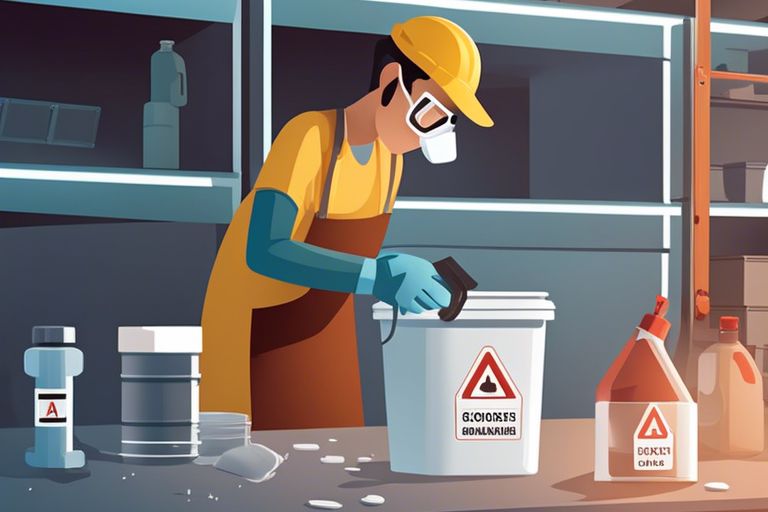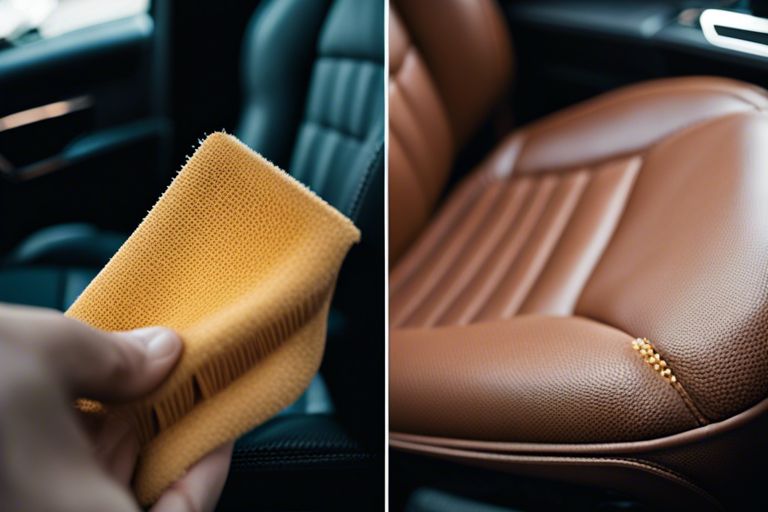Have you ever found yourself facing a hazardous coolant spill in your workspace or garage? It’s crucial to act swiftly and effectively to prevent any potential health risks or environmental damage. In this informative guide, we will provide you with step-by-step instructions on how to safely and thoroughly clean up a coolant spill. We will cover the necessary safety precautions, the proper cleaning supplies, and the best techniques to ensure that the spill is completely eradicated.
For your own safety and the safety of others, it is important to take necessary precautions when cleaning up a coolant spill. Following safety guidelines can help prevent accidents and reduce the risk of exposure to harmful chemicals.
Personal Protective Equipment
When cleaning up a coolant spill, it is important to wear the appropriate personal protective equipment (PPE) to protect yourself from potential exposure to harmful chemicals. This includes wearing gloves, safety goggles, and a protective apron or coveralls. Gloves will help protect your skin from direct contact with the coolant, while safety goggles will prevent any splashes from coming into contact with your eyes. Additionally, wearing a protective apron or coveralls can help prevent the coolant from coming into contact with your clothing and skin.
Ventilating the Area
Before you begin cleaning up the coolant spill, it is important to ventilate the area to prevent the buildup of harmful fumes. Open any windows or doors to allow for proper airflow, and if possible, use fans to help circulate the air. If the spill has occurred in a confined space, it may be necessary to use a respirator to protect yourself from inhaling any harmful vapors. Proper ventilation is essential to minimizing the risk of exposure to hazardous chemicals and ensuring a safe working environment.
Initial Response to a Coolant Spill
Assuming you have just discovered a coolant spill in your garage, it’s important to act quickly to prevent any damage or hazards. The first step is to refer to this informative resource on How to Clean Anti Freeze Off a Garage Floor. This will provide you with the necessary guidance on how to safely handle and clean up the spill. Remember that coolant can be toxic and should be handled with caution.
Containing the Spill
When dealing with a coolant spill, the first priority is to contain the spread of the liquid. Use absorbent materials such as kitty litter or sawdust to create a barrier around the spill. This will prevent it from spreading and causing further contamination. Be sure to wear gloves and protective eyewear when handling the spill to avoid any contact with the coolant.
Preventing the Spread of Coolant
After containing the initial spill, it’s crucial to take steps to prevent any further spread of the coolant. You can do this by using absorbent pads or socks to soak up the remaining liquid. Place these around the perimeter of the spill to capture any runoff. Additionally, be sure to block any floor drains or other openings to prevent the coolant from entering the environment. Remember, coolant can be harmful to the environment and should be handled with care to avoid any potential harm.
Cleaning Procedures
Keep in mind that cleaning up a coolant spill requires careful attention to detail and thoroughness to ensure the safety of your environment and the well-being of everyone in it. For a step-by-step guide on how to properly clean up a coolant spill, you can also refer to this How To Clean Antifreeze Off The Engine? – Cleanestor tutorial.
Absorbing the Coolant
When dealing with a coolant spill, the first step is to immediately contain the spill and prevent it from spreading. You can use materials such as cat litter, sawdust, or commercial absorbent mats to quickly soak up the coolant. Remember to wear gloves and a mask while doing this to avoid direct skin contact or inhalation of the fumes.
Neutralizing and Removing Coolant Residue
Once the coolant has been absorbed, it’s essential to neutralize any remaining residue to prevent harm to the environment and to ensure the safety of those around. You can use a solution of water and vinegar or a commercial coolant neutralizer to clean the affected area thoroughly. After neutralizing the residue, you can safely dispose of the contaminated materials in accordance with local regulations.Ensure that the area is well-ventilated while performing these steps to maintain a safe environment.

Disposal and Preventative Measures
Unlike other household spills, coolant spills require special care in disposal and prevention to avoid harm to the environment and your health. Improper disposal of contaminated materials can lead to serious consequences, such as contamination of water sources and harm to wildlife. To learn more about cleaning antifreeze off of concrete, check out this blog post on How to Clean Antifreeze Off of Concrete.
Proper Disposal of Contaminated Materials
When disposing of contaminated materials, it is crucial to follow local regulations and guidelines set forth by environmental agencies. You should never pour coolant down the drain or onto the ground. Instead, collect the spill using absorbent materials such as kitty litter or rags. Once absorbed, place the materials in a sealed bag and label it as hazardous waste. Contact your local waste management facility for proper disposal methods. By following these proper disposal measures, you are not only protecting the environment but also preventing potential harm to yourself and others.
Preventing Future Spills
To prevent future spills, it’s essential to regularly inspect your vehicle for any signs of leaks or damage to the cooling system. Address any issues immediately to avoid potential spills in the future. Additionally, properly store and handle coolant containers to prevent accidental spills. Always keep containers tightly sealed and stored in a cool, dry place. By taking these preventative measures, you can avoid the hassle and danger of cleaning up coolant spills in the future.

How to Clean Coolant Spill
Drawing together everything you have learned about cleaning up coolant spills, it is important to remember that speed is crucial in preventing any potential damage. By acting quickly and using the right tools, you can efficiently clean up a coolant spill without causing any harm to yourself or the environment. Remember to always wear protective gear, use absorbent materials, and properly dispose of any contaminated materials. With these steps in mind, you can ensure a safe and effective cleanup process for any coolant spill.
FAQ
Q: What should I do if there is a coolant spill?
A: If there is a coolant spill, quickly contain the spill to prevent it from spreading. Use absorbent materials like kitty litter or spill control pads to soak up the coolant.
Q: Are there any precautions to take when cleaning a coolant spill?
A: Yes, always wear gloves and safety goggles when handling coolant spills. Avoid direct contact with the skin and eyes, as coolant can be harmful if ingested or absorbed through the skin.
Q: How can I properly dispose of the contaminated materials from the spill?
A: Contaminated materials should be disposed of in accordance with local regulations. It is important to follow proper waste disposal procedures for coolant and contaminated materials to prevent environmental harm.
Q: What cleaning products are effective for cleaning coolant spills?
A: There are specific coolant spill clean-up products available on the market that are designed to effectively and safely clean up coolant spills. These products are typically biodegradable and safe for the environment.
Q: Are there any additional steps to take after cleaning up a coolant spill?
A: After the initial clean-up, it is important to thoroughly wash and rinse the affected area with water to ensure that all traces of coolant are removed. This will help prevent slips and falls and minimize the risk of contamination. Additionally, it is advisable to inspect the area for any potential leaks or damage that may have caused the spill.


